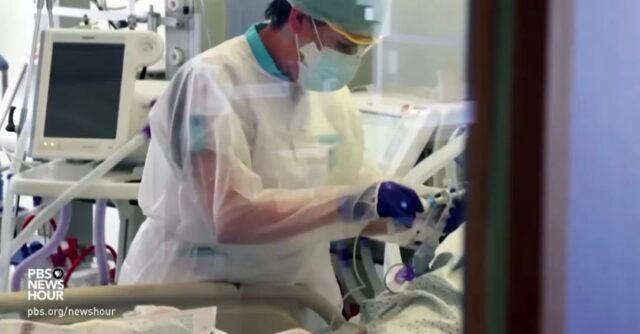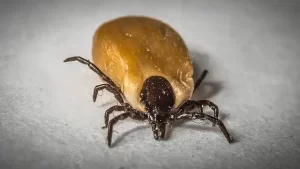How serious if COVID-19 Omicron is designated as “Variant of Concern”?
- Engineered Soybeans with Pig Protein: A Promising Alternative or Pandora’s Dish?
- Severe Fever with Thrombocytopenia Syndrome (SFTS): A Tick-Borne Threat with High Mortality
- Why Isolating Bananas Extends Their Shelf Life?
- This common vitamin benefits the brain and prevents cognitive decline
- New report reveals Nestlé adding sugar to infant formula sold in poor countries
- Did Cloud Seeding Unleash a Deluge in Dubai?
How serious if COVID-19 Omicron is designated as “Variant of Concern”?
- Red Yeast Rice Scare Grips Japan: Over 114 Hospitalized and 5 Deaths
- Long COVID Brain Fog: Blood-Brain Barrier Damage and Persistent Inflammation
- FDA has mandated a top-level black box warning for all marketed CAR-T therapies
- Can people with high blood pressure eat peanuts?
- What is the difference between dopamine and dobutamine?
- How long can the patient live after heart stent surgery?
How serious if COVID-19 Omicron is designated as “Variant of Concern”?
The latest mutant strain discovered in South Africa is listed as a “Variant of Concern”. What does this mean?
- Only when the Omicron strain has spread to a certain scale
- To better judge
- At present, its spread is mainly limited to South Africa
Geneva, at 11 noon on November 26, 2021, the World Health Organization is urgently convening a closed-door meeting to discuss whether the latest B.1.1.529 variant found in South Africa should be listed as a “Variant of Interest” (VOI ), or a more dangerous level: “Variant of Concern” (VOC). After a few hours, the results came out.
The WHO issued a statement, listing B.1.1.529 as a “variant that needs to be worried” and named it Omicron (named after the 15th Greek letter).
This means that experts from the WHO Virus Evolution Technical Advisory Group believe that new variants have higher transmission power or pathogenicity, or may reduce the effectiveness of current diagnoses, vaccines and therapies.
Previously, a total of four variants were included in the VOC by the WHO, including alpha, beta, gamma, and delta, which has the strongest spread, and Omicron became the fifth. The WHO pointed out that preliminary evidence suggests that compared with other VOCs, this variant may increase the risk of re-infection in the population.

The first known case of Omicron variant infection comes from a sample collected on November 9, 2021 in Gauteng Province, South Africa. (Image source: PBS video screenshot)The first known case of Omicron variant infection comes from a sample collected on November 9, 2021 in Gauteng Province, South Africa. (Image source: PBS video screenshot)
However, many experts pointed out that at present, further research is needed to analyze whether the spread of this variant strain is really greater than delta.
This depends not only on the mutation of the variant itself, but also The actual transmission trend in the population, the latter influencing factors are not only related to the characteristics of the virus, but also related to the vaccination rate, epidemic prevention policy, and population structure of various regions.
“There is no need to raise the alarm right now, and don’t panic right now.” Jin Dongyan, a virologist at the University of Hong Kong, emphasized to the report. He pointed out that to believe in science and watch its changes, the most important thing is to strengthen monitoring.
Follow-up will focus on the evolution of the three characteristics of new variants: dissemination, pathogenicity, and immune escape ability.
What do 32 mutations mean?
Omicron is considered the “most dangerous strain” because 32 mutations were found in its spike protein. This number of mutations is “unprecedented,” said Neil Ferguson, director of the MRC Global Infectious Disease Analysis Center at Imperial College London.
In comparison, Delta has only 16 mutations that have swept the world. Among all the mutations, the mutation located in the receptor binding region (RBD) is the most critical.
This is the “passage” for the virus to enter the human host cell. Omicron has at least 10 mutations in this region, Delta has only two, and Beta has three. , Omicron is 5 times that of Delta.
But the expert pointed out that the large number of mutations does not mean that the virus’s ability to spread or escape is stronger. In the whole genome sequence of the new coronavirus, nearly 30,000 mutations have been found so far. “Of the more than 30,000 mutations, 32 have changed, only about 1%.” Moreover, the spike protein itself contains about 1,200 amino acids. More than 30 is also a decimal.”
Compared with quantity, what is more critical is which sites have been mutated.
According to the currently published B.1.1.529 gene sequencing data, several of the 32 mutation sites are familiar to us.
For example, the N501Y mutation that has appeared in alpha and beta variants can improve The ability of the spike protein to bind to the receptor ACE2 enhances the infectivity of the virus.
Another mutation, E484, is a key site that helps the mutant strain escape the current vaccine immunity.
Both beta and gamma variants contain this mutation. In addition, the new variant rarely has two mutations near the furin cleavage site at the same time, namely P681H and N679K.
These two mutations may enhance its immune escape ability and make the spike protein easier to be cleaved. Enhance the ability of the virus to infect.
One of the important reasons for the increased transmission power of the delta variant is to carry the P681R mutation near the furin cleavage site.
It is also worth noting that B.1.1.529 carries a number of new mutations that have not been discovered before. “This variant contains many mutations that we are not familiar with.” University of Witwatersrand Virology in South Africa Home Penny Moore said.
Her team is analyzing the replication ability and immune escape characteristics of B.1.1.529 in the laboratory.
Moore previously said that because the variant contains too many mutations, the process of neutralizing it “complicated.” The latest news released by her team is very worrying.
Computer modeling suggests that B.1.1.529 can evade T cell immunity to a certain extent.
Compared with humoral immunity, the body’s immune response mainly relies on T cell immunity to eliminate the virus, and cellular immunity also has a memory immune response, which can prevent secondary infections in the body.
The researcher from German Institute of Virology: Uniklinik Essen pointed out that assessing the ability of a vaccine to resist mutant viruses mainly depends on its ability to induce the diversity of human immune responses. The most important thing is to induce the human body to produce T cell immune response capacity.
B.1.1.529 More unknowns have yet to be further “opened”.
Lu Mengji emphasized that the intrusiveness of B.1.1.529 and the changes in antibody neutralization ability need to be known after epidemiological investigations, experiments and other observations and studies, and there may be answers in the next few weeks.
Moore also pointed out that it is too early to draw conclusions on whether the new variants are really more infectious, and her team hopes to get the first more accurate result within two weeks.
Concerns about the spread of new variants will naturally lead to a more concerned question: Will Omicron surpass Delta and become a new generation of global epidemic strains?
It is still unknown whether Omicron will become a new dominant strain. The mutation of the COVID-19 virus is subject to certain restrictions.
In general, many variants of the COVID-19 have not survived, and even some of the survived variants, only a few of them can become dominant strains.
The first known case of Omicron variant infection comes from a sample collected on November 9, 2021 in Gauteng Province, South Africa. (Image source: PBS video screenshot)The first known case of Omicron variant infection comes from a sample collected on November 9, 2021 in Gauteng Province, South Africa. (Image source: PBS video screenshot)
“From the outbreak to the present, at least hundreds of mutant strains have been found, but only one Delta can stay.
In the past, beta and gamma mutant strains have also been shown to have relatively strong immune escape characteristics, but they are in contact with Delta.
The tower was still defeated in the communication game, and finally disappeared silently.” Jin Dongyan explained.
He also said that only when the strain has spread to a certain scale can we better judge it. The current scale of its spread is still very small, mainly limited to South Africa.
The first known case of Omicron infection came from a sample collected on November 9, 2021 in Gauteng Province, South Africa.
Although the total number of confirmed cases of COVID-19 in South Africa is relatively low, it has increased rapidly in the past 7 days. 273 new infections were recorded on November 16, but by November 25, this number had risen to more than 1,200, of which More than 80% came from the province, and, among the 77 virus samples collected in Gauteng between November 12 and 20, gene sequencing showed that all were Omicron variants.
As of November 25, 2021, it has spread to three countries and regions. At least 77 cases have occurred in Gauteng, South Africa, 4 cases in Botswana, and 2 cases in Hong Kong.
WHO: No travel restrictions are required for the time being
It is not clear where the source of this new variant is. However, some scholars speculate that it may originate from patients with weakened immune systems.
Professor François Baroques, director of the Institute of Genetics at University College London, said that a large number of mutations in the B.1.1.529 variant strain apparently accumulated in a “single outbreak”, which suggests that it may be In people with weakened immune systems, such as untreated AIDS (HIV) patients evolved during chronic infections.
“This is a guess.” An interviewed virologist told the report, but he believes that it is still necessary to observe the local cases, such as whether the cases have underlying diseases, immune deficiency, etc. Judgment, without basic information, cannot be inferred.
The mutations of the new variants are “extraordinarily large”, and there are three possibilities. One is that the virus has been transmitted for many generations in people with immunodeficiency; the other is that the virus has spread in other animals and returned to humans from animals. “Unusual” mutations; third, due to the relatively backward public health development in a certain area, the virus may have been silently circulating in this area for a long time, and many mutations have occurred, but due to insufficient sequencing, it was not discovered in time.
In fact, since the COVID-19 pandemic, research on the evolution of more viruses in HIV patients after being infected with COVID-19 has been ongoing.
Researchers from the Institute of African Health and KwaZulu Natal University published a paper on the preprint website on June 4, 2021, “Persistent SARS-CoV-2 infection and persistent SARS-CoV-2 infection associated with advanced HIV infection Evolution within the host.
The research object of the paper is an HIV-positive female patient in her 30s who has been infected with the new coronavirus for more than 6 months. During this process, the virus population has changed significantly in this woman: the 6th day of infection , The new coronavirus in the host had an E484K mutation in the receptor binding domain, two spike mutations K417T and F490S appeared on day 71, followed by L455F and F456L mutations on day 106, and D427Y and N501Y occurred on day 190 mutation.
Studies have pointed out that virus evolution may be driven by selective pressure that impaired neutralizing antibody response.
Previously, the emergence of Alpha variants was the result of the inability to clear the virus in infected individuals.
In August 2021, a new study from the research team of the University of Bath and the University of Edinburgh pointed out that if someone is infected with the COVID-19 virus for more than a few weeks, the virus may evolve and may lead to new mutations. “The space for virus evolution.” It’s bigger than we thought.” The researcher said.
In South Africa, there are approximately 2.2 million untreated HIV-positive patients, of whom less than 200,000 have been vaccinated against the COVID-19.
According to data from the South African Ministry of Health, 35.37% of the adult population in South Africa has been fully vaccinated, but the number of vaccinated people has declined in recent days.
Experts suggested that the group with the highest priority for booster vaccination should be the immune-deficient group, “maybe the first booster will not work, but two more boosters.”
He explained that when the first wave of large-scale breakthrough infections appeared in the United States, this problem was already discovered, that is, people with immunodeficiency did not produce enough antibodies after two injections.
Moreover, for this special population, the strategy of immunization enhancement should be combined with each specific case and specific analysis, because the protection of each immunodeficiency individual by the vaccine is very different, and only in this way can persistent infection be prevented.
With the continuous emergence of mutant strains, people with older age and immunodeficiency are more affected, and they need to strengthen their immunity and take personal protective measures.
In addition, experts pointed out that the current vaccines are still effective. Even if they fail, humans can develop new vaccines in a short period of time.
On November 26, Moderna stated that it is working quickly to test the ability of its vaccine to neutralize new variants and expects to obtain data in the next few weeks. AstraZeneca is also seeking to understand the impact of Omicron variants on its vaccines, and is testing its antibody combination therapy against the new variants.
A spokesperson for the company said: “AstraZeneca is conducting research in Botswana and Eswatini where the variant was discovered. This will allow us to collect real-world data on the vaccine against the new variant.”
With the advent of new variants, in the past two days, the world that has struggled to return to normal has begun to “close” again. Although the World Health Organization warned countries not to impose travel restrictions hastily on the 26th, they should seek “risk assessment and scientific methods.”
But just after WHO listed Omicron as a VOC, the United States immediately announced travel restrictions on eight African countries, including South Africa, Botswana, Zimbabwe, Namibia, Lesotho, Swaziland, Mozambique and Malawi.
Previously, the United Kingdom, France, Israel and other countries have announced travel bans on parts of Africa.
Among them, the United Kingdom has included South Africa and Botswana on the red list from the 26th, and suspended flights from these countries to the United Kingdom.
In addition, Singapore, Japan, Malaysia, the Philippines, Turkey, Egypt, Saudi Arabia, Bahrain and Jordan have also announced new restrictions on travelers from the region.
Just now, Kathy Hochul, the governor of New York State, announced that the state will enter a disaster emergency from December 3rd. She warned: “Although the Omicron variant has not been found in New York State, it is coming soon. .”
How serious if COVID-19 Omicron is designated as “Variant of Concern”?
(source:internet, reference only)
Disclaimer of medicaltrend.org
Important Note: The information provided is for informational purposes only and should not be considered as medical advice.



